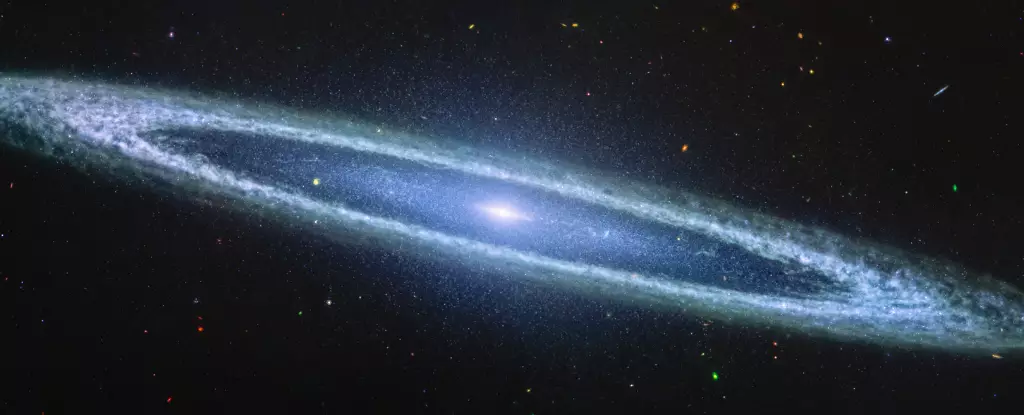NGC 4594, affectionately dubbed the Sombrero Galaxy, is a unique cosmic entity that has captivated astronomers since its discovery in 1781 by Pierre Méchain. With its distinct symmetrical ring of dust forming a striking visual resemblance to a hat, this galaxy has long intrigued both professional and amateur astronomers alike. Recently, observations from the James Webb Space Telescope (JWST) have unveiled remarkable details that challenge previous understandings of this enigmatic galaxy, presenting exciting new avenues for research into galaxy formation and evolution.
The allure of the Sombrero Galaxy extends beyond its visual appeal. With a diameter of approximately 50,000 light-years, it is classified as a spiral galaxy, distinguished predominantly by its prominent dust lane that encircles the central bulge. The initial observations made by the Hubble Space Telescope provided a fascinating glimpse into this structure, yet were somewhat limited due to the constraints of optical imaging. The thick dust ring, counterintuitively, is not merely a remnant of star formation; instead, it was once believed to harbor fibrous nurseries brimming with new stars.
The JWST has shifted this paradigm dramatically. Using its advanced Mid-Infrared Instrument (MIRI), the JWST has provided a high-resolution image that penetrates the obscuring layers of dust, revealing previously hidden characteristics of the Sombrero Galaxy. This transition from optical to infrared imagery has been pivotal in altering our perceptions of star formation and the dynamics of matter around a galactic nucleus.
An astonishing aspect of the JWST’s findings is the revelation of warm molecular gas clusters within the dust ring, which suggests some activity but surprisingly indicates a dearth of young stellar formations. This observation is contrary to the earlier hypothesis of the dust being a fertile ground for new stars. The implication here is profound; it signifies that the dusty regions of NGC 4594 might not be contributing significantly to stellar generation as previously thought.
The image also provides a closer look at the galaxy’s central region. Unlike the traditional perception of a star-laden halo surrounding an active black hole, the JWST has depicted a flat disk in its place. This flat structure indicates a different arrangement and distribution of material than was inferred from earlier observations, suggesting a more complex interaction between the black hole and its surrounding galaxy. Notably, the black hole itself, while still active, is characterized as having a low luminosity. This discovery raises intriguing questions about the mechanisms at play in the evolution of such a central black hole, which intriguingly produces plasma jets akin to those seen in more active galactic nuclei.
The implications of these findings extend far beyond merely refining our understanding of NGC 4594. The somber revelation that a satellite galaxy, once thought to be a robust stellar factory, is instead revealing limitations in its star formation capacity paves the way for deeper inquiries into the lifecycle of galaxies. What factors contribute to the apparent rarity of new stars in this dust-rich environment? Additionally, the presence of nearly 2,000 globular clusters—a number that seems disproportionately high for a galaxy of NGC 4594’s size—opens another avenue of inquiry. These globular clusters could hold secrets about the galaxy’s formation history and its interactions with nearby galactic structures, presenting a unique opportunity for further study.
The initial finds from the James Webb Space Telescope signify a promising future in our exploration of the Sombrero Galaxy. The rich tapestry of data still to come from future observations may offer unparalleled insights into how galaxies operate at different stages of their evolution. As scientists delve deeper into this unique celestial body, they will grapple with fundamental questions about the nature of dust and star formation, the dynamics of black holes, and their impact on the surrounding galactic environment. With the Webb now leading the charge into this realm, the universe, especially the story of NGC 4594, holds many secrets waiting to be uncovered.

